With signs of spring approaching, a wide array of Japanese learning resources have bloomed. We picked the ones we really like, and we hope they help you put a spring in your step as you study Japanese!
- 観劇三昧 / Kangeki Zanmai
- 白川静さんに学ぶ これが日本語
- Radio Garden
- Ako Nihongo Lessons
- popIn WAVE
- にほんごで文化体験
- くずし字学習支援アプリKuLA
- The Routledge Intermediate to Advanced Japanese Reader: A Genre-Based Approach to Reading as a Social Practice
- Bunsuke's Newsletter
- Sakura Tips
- Onomappu
- Alice in Borderland
- Fresh Cards
- Japanese Lessons with Mom & Daughter
- Kyotopia Podcast
- AniOtaRadio -Anime Sensei's OTAKU Radio-
- Clubhouse
- USJETAA Japanese Reading Group
観劇三昧 / Kangeki Zanmai
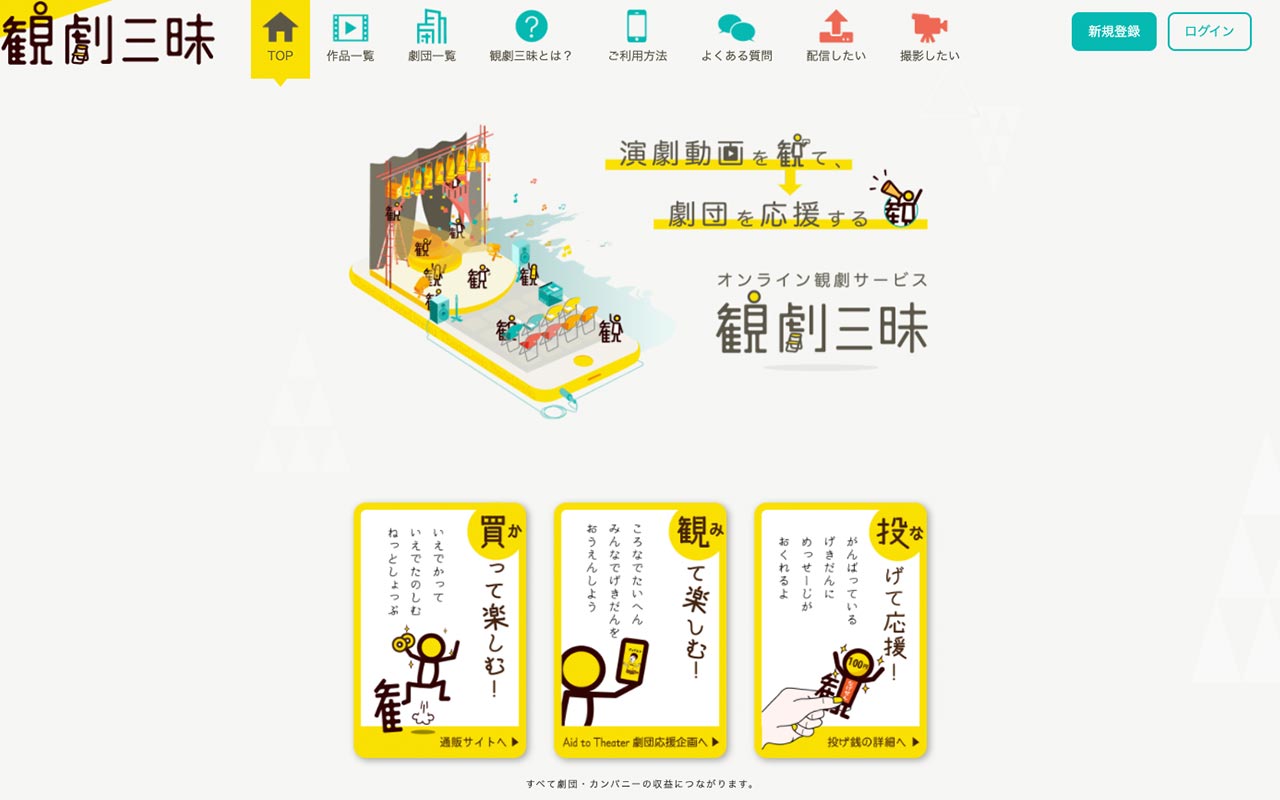
Good news for Japanese theater fans, or anyone who has simply missed going to plays during the global pandemic. 観劇三昧 (Kangeki Zanmai) is a website (and iOS app) that lets you watch recorded and live-streamed plays. So far, they have around 1680 works from over 470 theater troupes available, and most of the plays are in Japanese!
Although the content and website are not specifically designed for Japanese learners, it's a great way to have a theatrical immersion experience. There's no closed captioning or subtitling available, but since the actors tend to speak extra clearly in theaters, this is good Japanese listening practice.
Full access to all the productions costs under ten dollars, and there is some free content available (especially the first three minutes of plays). There's also a feature called 投げ銭 (throwing coins) for you to support the theatrical companies by paying extra money and sending a message. If you are interested in theaters or acting in Japanese, go and have a look at Kangeki Zanmai!
白川静さんに学ぶ これが日本語
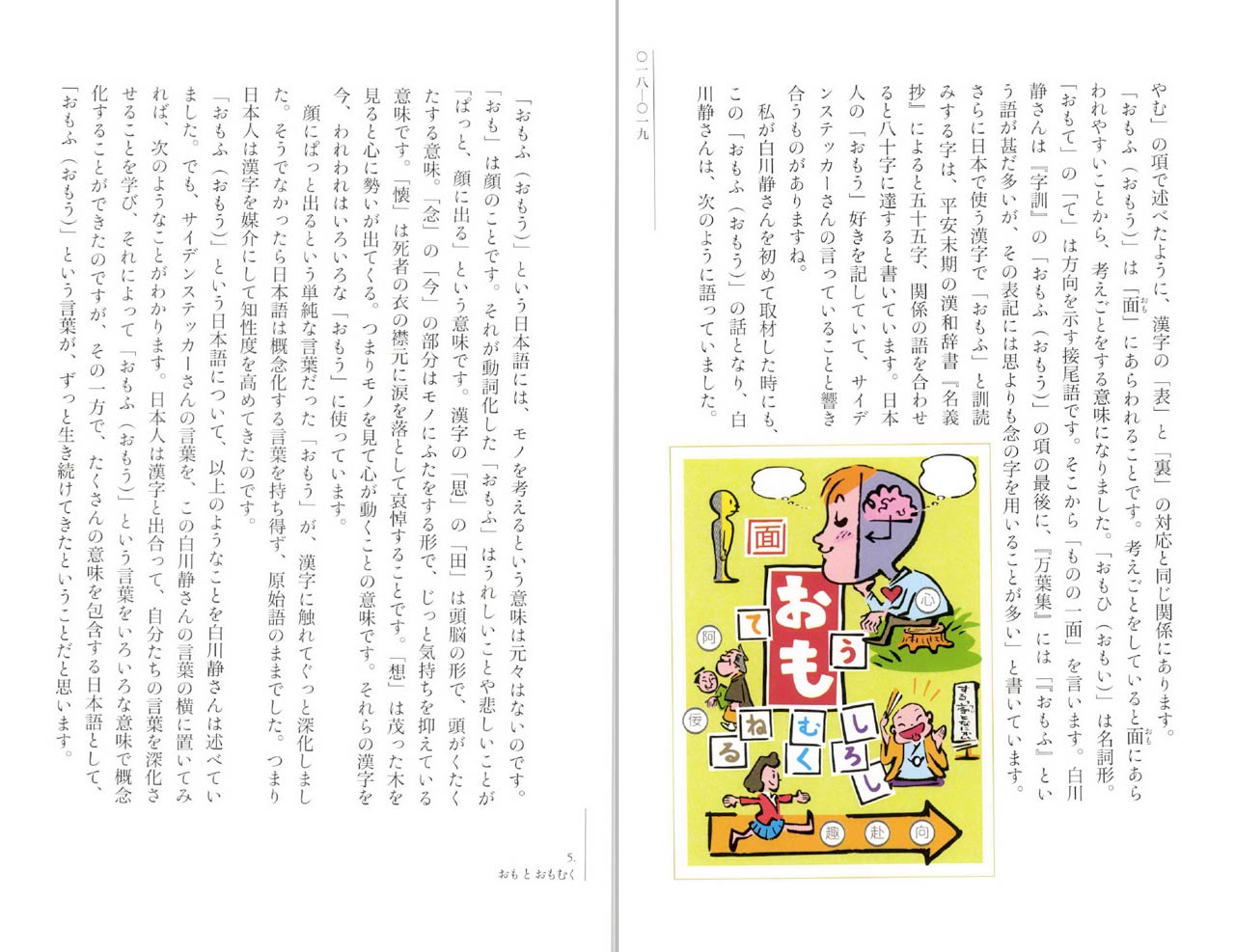
This book introduces the history and meanings of various Japanese words with shared roots. Based on the insights of Professor Emeritus Shizuka Shirakawa ( 白川静), a leading kanji scholar, it also has cute illustrations to help readers visualize the links between the words introduced.
For example, the component おも appears in many modern Japanese words. As this book explains, おも originally comes from the word 面, meaning "face." The verb 思う, which means "think" or "feel" spontaneously, is derived from this root. おも (face) developed into おもう (think, feel) because your face usually expresses your spontaneous thoughts or emotions.
If you already have intermediate to advanced reading skills in Japanese, and you are looking to improve your Japanese word knowledge by delving into the etymology, this book is a useful resource!
Radio Garden

Radio Garden is a website and mobile app that allows you to explore radio stations on a global map and listen to radio from all over the world! 🗺📻 Even though it's not specifically meant for Japan, you can find radio stations in different areas of Japan and listen to their local radio programs.
The website is simple and easy to use. The map shows green dots for radio stations, and once you click on a dot, it starts streaming the radio. If you are lucky, you might hear some regional dialects while you hop around radio stations all over Japan!
If you're getting tired of finding and listening to different Japanese podcasts or playlists, try Radio Garden for a fun new listening experience!
Ako Nihongo Lessons
Ako Suzuki, a well-known sensei on Twitter, has about 20 years of experience teaching Japanese. Last year, she created the YouTube channel Ako Nihongo Lessons and the podcast 日本語 with あこ as a new challenge.
Ako-sensei's YouTube channel has videos for all the JLPT levels, with a special focus on levels N2, N3 and N4. And さすが Ako-sensei, the quality of her lessons is very high. It doubles up as listening and vocabulary practice, so it's definitely a channel worth subscribing to!
popIn WAVE
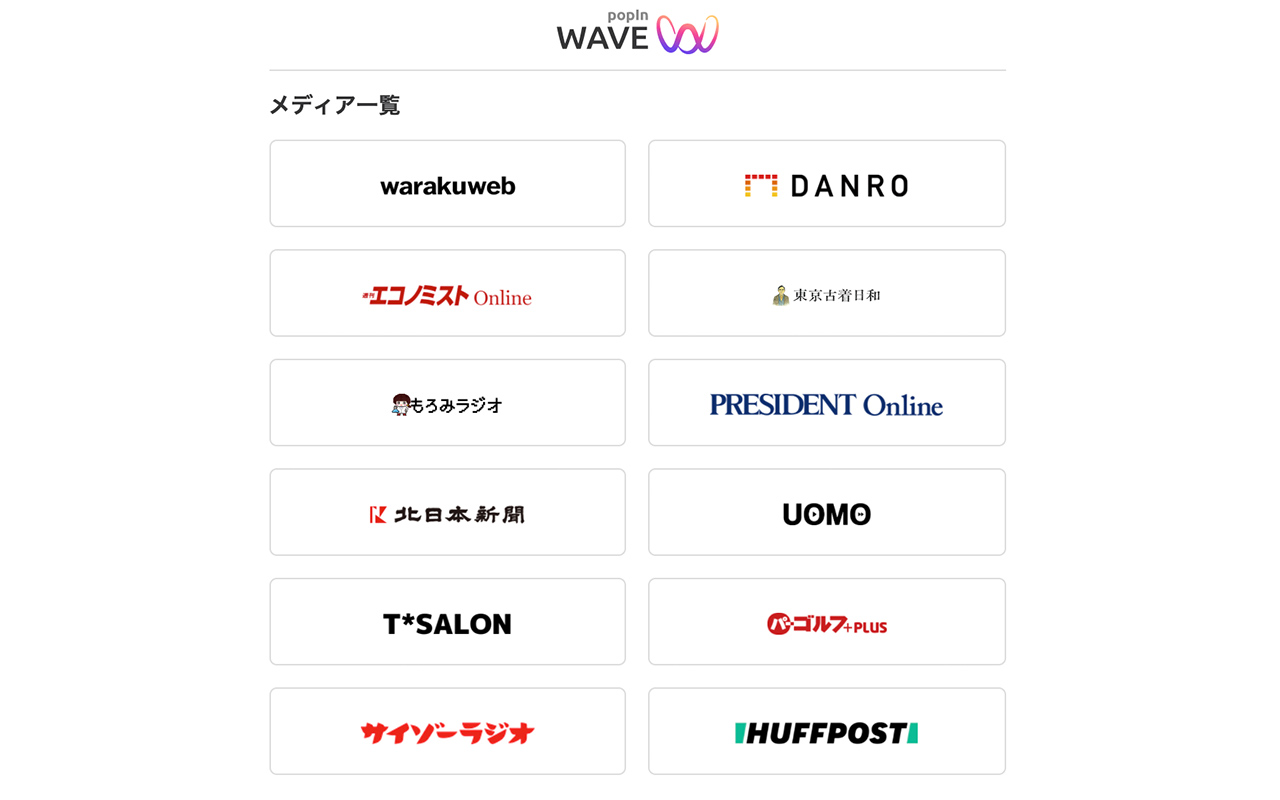
popIn WAVE is an audio platform for multiple media outlets, including The Weekly Economist ( 週刊エコノミスト) and HUFFPOST Japan. Via this platform, you can listen to a wide range of "spoken articles," all based on corresponding written articles. These spoken articles examine the stories behind the original articles, and discuss related topics, often with the writer or editor of that article.
All the content is professionally made and very enjoyable. It may be challenging, especially if you are not familiar with the topic, but reading the article first and then listening to the audio content will help you follow along better. This is a valuable resource for upper intermediate and advanced Japanese learners.
にほんごで文化体験
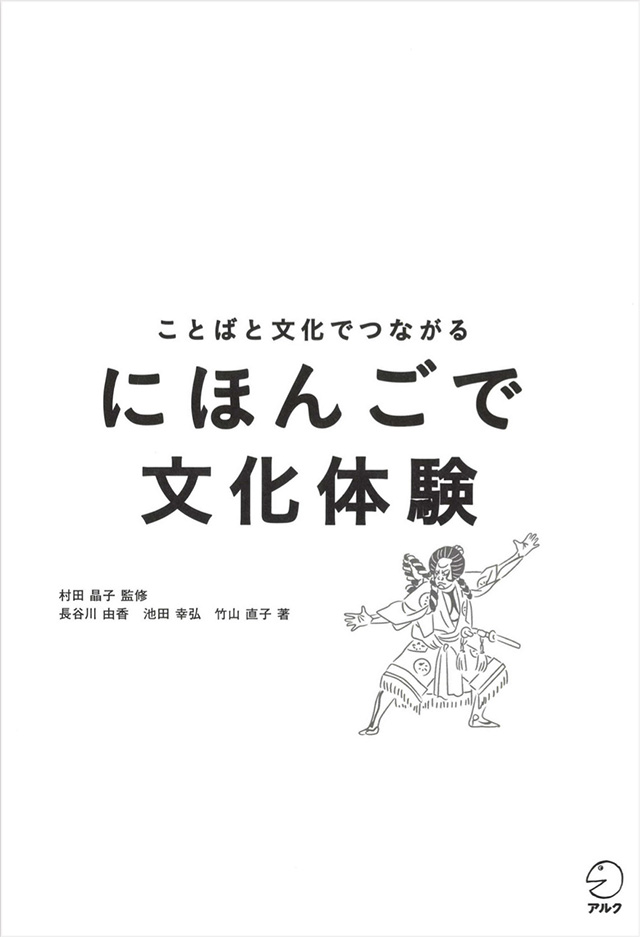
にほんごで 文化体験 is a workbook for learning Japanese through cultural experiences. Based on a short-term language and culture exchange program at Hosei University, the book is designed for learners to get out of the classroom, go experience Japanese culture, connect with locals, and learn Japanese throughout the experience. Each chapter consists of preparation, main activity, then post-activity sections.
For example, a chapter about Japanese food starts with a quiz on common Japanese dishes, online research of food using onomatopoeia, and online restaurant searches. After the research and preparation are done, you are actually going to a restaurant. But the goal is not only to enjoy the food — you are expected to do a 食レポ, which you often see in Japanese TV programs, where hosts eat and share what they think of the food with the audience (kind of like Guy Fieri does!). Then after going to a restaurant, you share your dining experience with classmates, and even have a foodie debut on Japanese Yelp, writing an online review for the restaurant! There are various activities like this, and you'll get to learn and practice using different kinds of related vocabulary and expressions.
Although this resource is originally intended for a classroom environment or "going out to do stuff" (which is hard during the global pandemic), this material can be used flexibly to fit different learning environments like online tutoring. A separate guide is available for educators, to help teachers and tutors to tailor the learning experience according to their students' learning environment and level. The vocabulary list has English translations, but the book is mostly written in Japanese with furigana.
くずし字学習支援アプリKuLA

As a learner of Japanese, are you the go-to person for your friends and family for all those "what does this Japanese say?" questions? Nine times out of ten, the text they're asking about is some totally illegible cursive Japanese that even most native speakers couldn't read, am I right!?
Enter くずし 字学習支援アプリ, which translates to "Kuzushiji Learning Application" — "KuLA" for short. Kuzushiji is the name for those scribbly cursive characters, and this app is designed to help you learn to read them. In the app's "Learn" section, you can read about the basics of kuzushiji, as well as drill yourself on recognizing hentaigana (variations of hiragana characters) and cursive versions of kanji. The "Reading" section provides opportunities to put your kuzushiji knowledge to the test and read real-life ancient texts, with the help of modern Japanese transcriptions, of course. The app interface is available in both Japanese and English, although some parts of the app are still in the process of being translated.
I certainly only recommend this app if you've got some significant Japanese learning experience under your belt already. You really don't need to learn to read kuzushiji ever, if you don't want to. That said, if you're interested in reading pre-Edo texts in Japanese, then this app will help you reach that goal!
The Routledge Intermediate to Advanced Japanese Reader: A Genre-Based Approach to Reading as a Social Practice

Are you a high-intermediate or advanced reader of Japanese, but you still need some help reading Japanese newspapers or fiction? If so, then this book is for you. The goal of the book is to help learners of Japanese go beyond simple comprehension of the vocabulary and grammar in authentic texts, and to become critical readers who understand the social implications and context surrounding writing in Japanese.
The book covers a wide range of genres, including informative texts like news reporting, opinion pieces, fiction writing, and narrations of personal experiences. Each text comes with pre-reading questions and vocabulary lists, activities to do while reading (such as underlining certain kinds of information), and post-reading activities and questions to check comprehension. These are the current best practices for teaching reading in language education, so it's clear that a lot of thought and expertise went into the design of this book.
If you've been studying Japanese for a while but have reached a plateau in your reading ability, then I really can't recommend this book enough!
Bunsuke's Newsletter
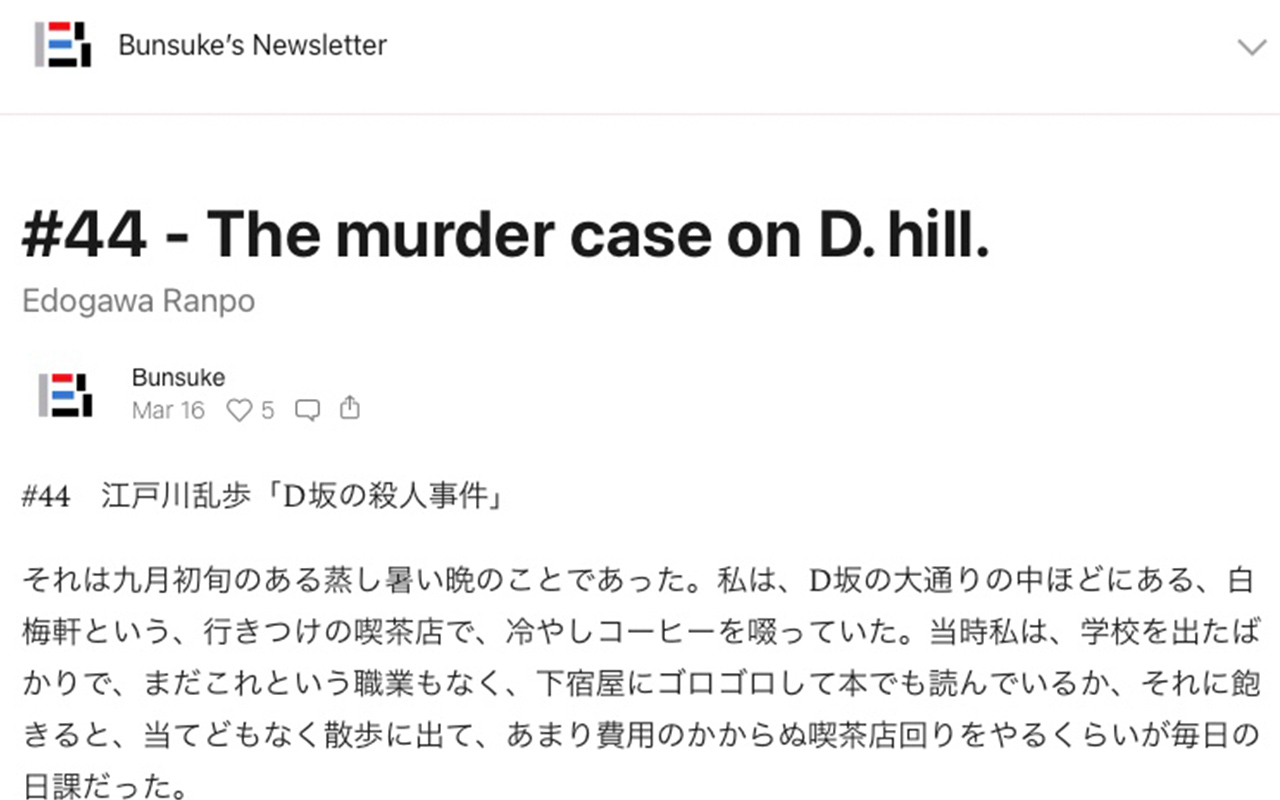
Bunsuke's Newsletter is a great way to add a dose of Japanese reading practice to your daily routine. After signing up, you'll receive a daily email with a short excerpt from Japanese literature, complete with vocabulary list, grammar explanations, and a translation of the text. Bunsuke includes an Amazon link for the book they took the excerpt from, so you can read on if one of the texts really strikes your fancy. If you're not into the idea of yet another subscription coming to your email inbox, you can also access the same content on Bunsuke's blog.
I've been receiving Bunsuke's newsletters for a few weeks at the time this article was posted, and I really enjoy the opportunity to get a taste of a wide range of Japanese literary works. I also find the translations to be of very high quality, and I believe they are Bunsuke's own. Their "About" page states that they will be developing courses for both beginner and advanced students, so definitely keep this page bookmarked and check back for updates!
Sakura Tips
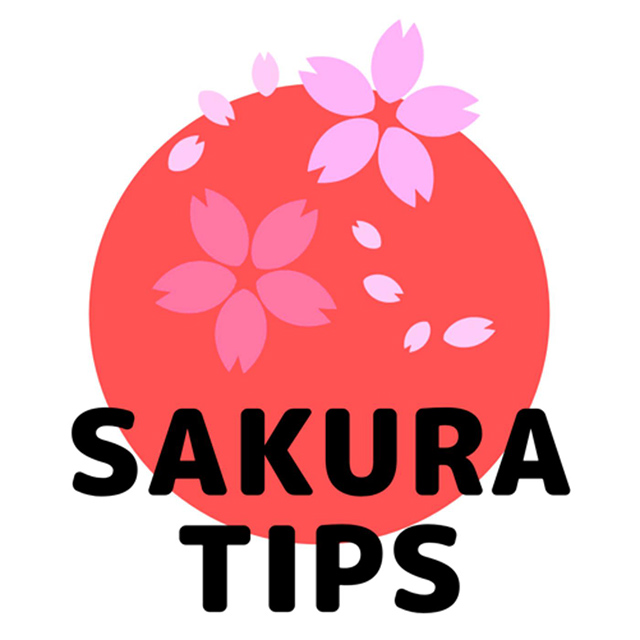
Sakura Tips is a short, daily podcast for beginner level Japanese language learners looking for some level-appropriate listening practice. The host, Mari, speaks in a very clear voice, and slows down her speech, while not overdoing it so much to make it odd. Instead, the speed strikes a nice balance between comprehensibility and naturalness.
Additionally, the podcast is scripted, which avoids any meandering or time-filler phrases, and the script is available to view on her website, in both Japanese and English. This is great for Japanese learners who want to follow along while they listen, or to simply check that they properly heard or understood something spoken.
The topics vary, but with the short episodes, the focus is constrained and easy to understand. Additionally, because of the daily release schedule, there’s a huge back-catalog of episodes; both so you won’t easily run out, and that you’re sure to find topics that interest you. Really, for beginners looking to get started with Japanese listening practice, there might be no better place than Sakura Tips.
Onomappu
Onomappu is a YouTube channel hosted by Hitoki, a native Japanese speaker who is also fluent in English and Chinese. The videos generally have subtitles available in several different languages. Hitoki speaks slowly and clearly about Japanese grammar points, vocabulary, advice for speaking naturally, and other topics related to language learning. The way he employs learner-friendly language while still keeping his Japanese pretty natural is impressive.
Watching Hitoki's grammar videos feels like listening to your friend kindly explain something that you didn't quite "get" during class. His teaching style is engaging and personable enough to keep you hooked, which might be helpful if you have trouble concentrating on more structured content.
In particular, his onomatopoeia series is a real gem. Hitoki makes use of props, gestures, images, key words, and copious examples to really give a sense of what each onomatopoeia feels like from a native speaker's perspective.
The content of at least one of the videos may be inappropriate for kids, and the host's sense of humor might not be for everyone. However, if you enjoy more casual, conversational learning, this channel can help you get a better understanding of some nuances of Japanese grammar and vocabulary outside of a textbook.
Alice in Borderland
Based on the Haro Aso's manga of the same name, the first season of this Netflix series was released in December 2020 and it proved so popular that a second season was announced just two weeks later. It's a tense, stylish drama, set in a surrealistic version of Tokyo. The series follows avid gamer Arisu, who finds himself trapped with his two best friends inside a hellish real-life video game. Just a word of warning: pretty much every episode contains graphic violence and this show is definitely not recommended for under 18s, or anyone looking for a relaxing experience!
The dialogue consists overwhelmingly of very casual spoken Japanese, with some computerized voices giving game instructions in polite language. The speaking pace is generally fast and the characters often mumble or shout, making it often hard to catch what they're saying. This show will therefore be most helpful as a resource for learners with advanced listening skills.
If you want to improve your Japanese whilst also being entertained — and you have a strong stomach — then this addictive, well-made thriller is worth checking out.
Fresh Cards
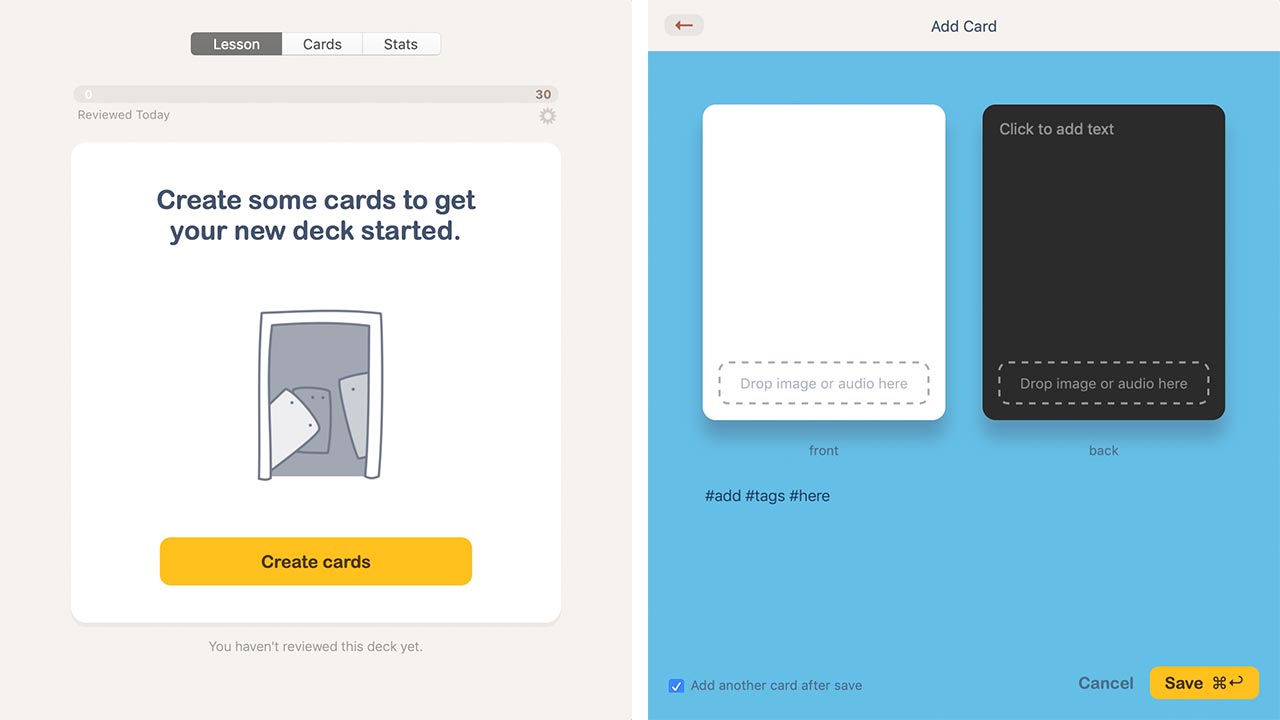
This new app was released a few months ago by an independent developer looking for an easy-to-use flashcard system to memorize facts more effectively. It uses SRS, just like Tofugu’s own kanji and vocabulary learning platform, WaniKani, and it is indeed attractive and user-friendly.
Fresh Cards is only available on Apple platforms, but the one-off purchase price includes both iOS and MacOS, and it syncs via iCloud, meaning that you can create flashcard decks on your Mac and then share with your iPhone or iPad (and vice versa). It supports Japanese text, and you can drag and drop images and audio files into the cards. Creating the decks couldn’t be easier, and if you want to reorder your cards into different decks, you simply drag and drop them. When reviewing on the Mac version, you can use the down arrow key to flip the card, and then the left and right keys to choose whether you got that card right or wrong.
There are currently a few features missing from the app, depending on how you would want to use it, but the developer hopes to add more in future. Even so, Fresh Cards doesn’t intend to be as customizable as well-known flashcard program Anki, and doesn’t offer as many features as some other flashcard apps out there, like Mochi Cards or Wokabulary, but it does what it sets out to do very well: it looks great, and it’s intuitive and fun to use.
So if you're an Apple user looking for a nice, simple app to create custom flashcards, and use them with an SRS algorithm, Fresh Cards could be a good option for you!
Japanese Lessons with Mom & Daughter
Are you studying JLPT N2 grammar and looking for something new? If so, we have a YouTube channel you may be interested in. Although "Japanese Lessons with Mom & Daughter" has only been out for five months, they already have dozens of videos, all on the topic of N2 grammar. In these clips, a mother with seventeen years of Japanese language teaching experience and her eight-year-old daughter work together to teach various grammar structures.
Most of their videos are about five minutes long and focus on one grammar point. In each video, the mother explains the grammar structure in a clear and thorough way and the daughter acts out scenes that use the grammar. The example sentences are shown on the screen for you to read. The sentences, as well as the videos in general, use very little English, which is good for those who are intermediate to advanced speakers. This resource is most beneficial to those who are studying for the N2 but could also be good review for the N1 or a challenge for N3 learners.
Kyotopia Podcast
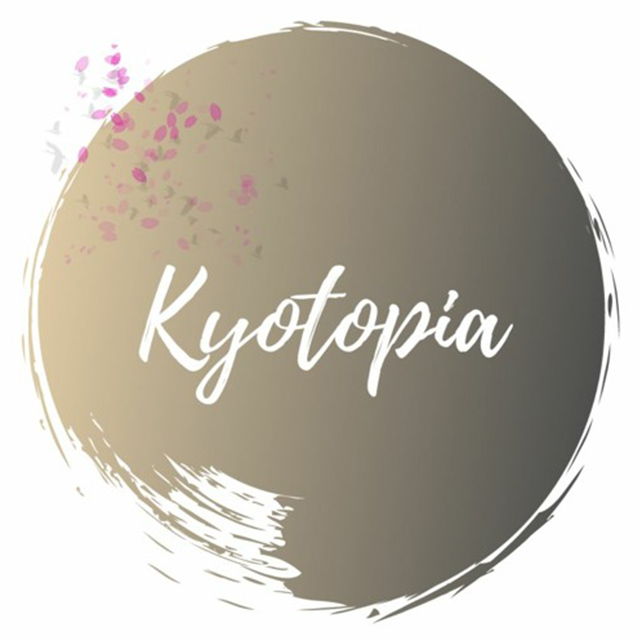
Are you a fan of Kyoto or want to learn more about the city? Why not try out the Kyotopia Podcast? This podcast is hosted by two bilingual speakers, an American named Micah who has lived in Japan for 10 years and Yuko-sensei, who has a background in teaching Japanese. They both recently moved to Kyoto and have a lot to talk about! Even if you’re not very interested in the Kansai area, this podcast covers topics related to Japan in general, and is also a good opportunity to practice your Japanese listening skills.
Each Kyotopia Podcast episode is about 30-45 minutes long. They release episodes once a week on topics like biking and drinking, all in Kyoto! In terms of the language used, the podcast seems to be in roughly 70% English and 30% Japanese. If you’re looking for a podcast to practice for the JLPT, this may not have enough Japanese for you. If you’re wanting a fun, light, podcast that features some Japanese, you should definitely give this a listen.
AniOtaRadio -Anime Sensei's OTAKU Radio-
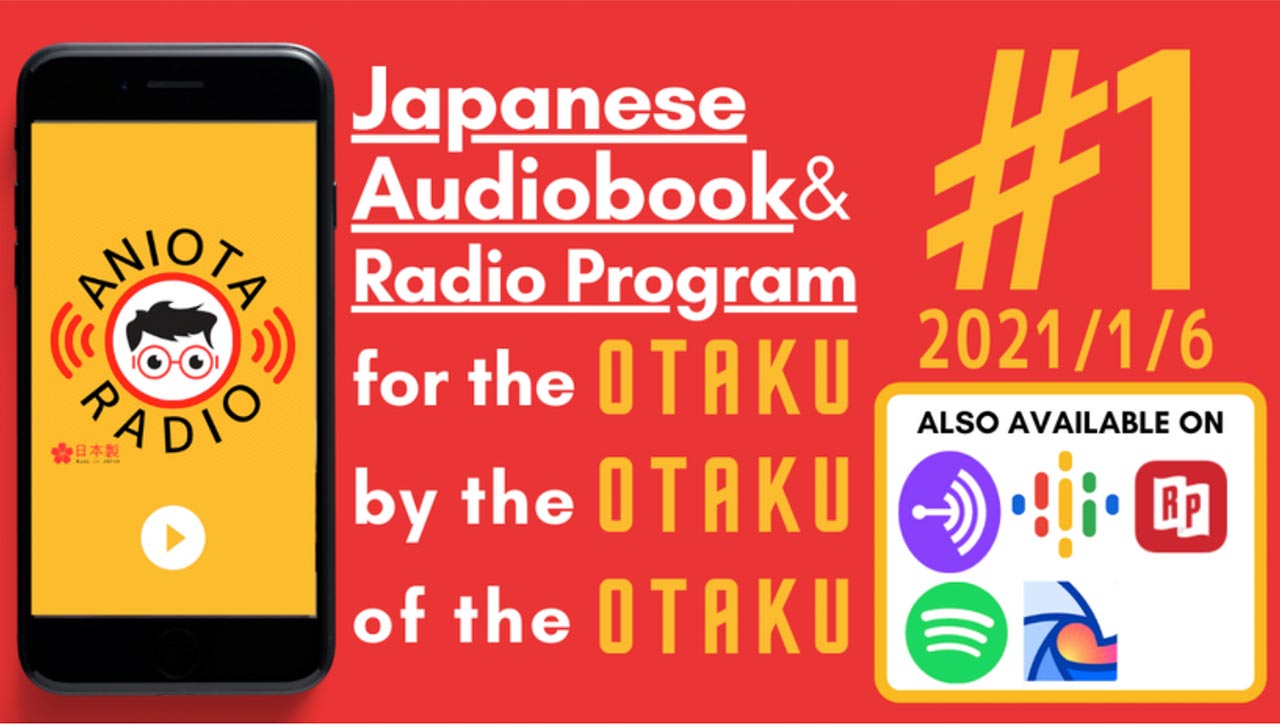
In this brand new podcast, self-proclaimed anime otaku and Japanese teacher Anime-sensei talks about all sorts of anime-related topics, from his favorite anime titles to phrases commonly used in anime shows.
Apart from the intro, AniOtaRadio is all in Japanese. The host speaks at a natural speed, so it might be a bit difficult for beginners, but he offers Japanese transcripts in three different formats via patreon: kana and kanji, hiragana only, and romaji.
If you are an anime fan and looking for some listening materials, check out this podcast!
Clubhouse

Clubhouse is a voice-based social media app where you can talk to others as well as just listen to others talking. It's not specifically targeted at a Japanese learning audience, but it has rapidly grown in popularity in Japan since the end of 2020.
It could be used as a material for listening to and speaking Japanese as there are many language exchange and Japanese learning rooms available for you to practice with native speakers of Japanese and fellow Japanese learners. Some rooms are hosted by influencers and meant to be enjoyed like a live steaming podcast (sometimes soliciting audience questions, just like call-in radio programs), and these tend to be educational and great material for listening practice. You can also find rooms that welcome everyone to participate as speakers. There's a "raise hand" feature to get invited to be a speaker, just like in Zoom calls. So don't worry, introverts or absolute beginners — if you are feeling too shy and want to practice just listening, that's definitely an option too.
Each room has a topic and there's a huge variety. Some topics are intended for more niche audiences such as "medical professionals," "Japanese-speaking residents of Canada" or "sauna lovers," which could be a great way of meeting new people with shared interests, especially during the global pandemic. It's also a great chance to learn related vocabulary and expressions!
You can join or follow "clubs," which are communities inside Clubhouse. For example, there's one run by Chiba Center, a Chicago-based Japanese language school for black creatives, and there's a new club called "Japanese Speaking Club," run by Japanese teacher Ken Sensei and other Japanese educators. They host discussions and lessons for Japanese learners!
Clubhouse is still in beta and currently invitation only and available exclusively on iOS, but hopefully it will become more widely accessible in the near future!
USJETAA Japanese Reading Group
USJETAA Japanese Reading Group is a virtual book club hosted by the U.S. Japan Exchange & Teaching Programme Alumni Association and Daniel Morales, translator and Japan Times contributor from the How To Japanese blog.
It's a free monthly Zoom event that doesn't require you to buy books or keep up with a rigorous reading schedules. Each month, they choose a short piece from Aozora Bunko, the free public-domain literature site. During the 90-minute Zoom call, the members take turns reading each Japanese sentence aloud and then explain the sentence in English, to the best of their ability.
Although the reading group is organized by USJETAA, being an alumnus of the JET Program is not required. In fact, participants range from Japanese learners from the U.S. to people from Japan looking to improve their English. You can join the USJETAA Japanese Reading Group Facebook Group to get the invite and Zoom link for next month's event.
If you are interested, check out the group's past readings and current selection to gauge whether the texts are accessible for your level. Even if the text is harder than you're used to, participating in the group would certainly give you practice reading aloud and hearing how others' interpret the sentences in English. Reading Japanese literature can be difficult — not just because of the kanji, but also because there's so much wrapped up in context — and this reading group can help you, one sentence at a time.
That's all for this edition! We hope you've found something that piqued your interest. If you discover any new Japanese learning resources, send us a message at hello@tofugu.com or on Twitter @tofugu. Even if it's just new to you, send it our way. We're always on the lookout for quality resources. See you for the summer edition! またね!
